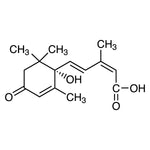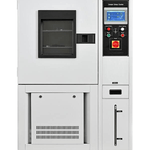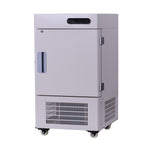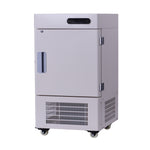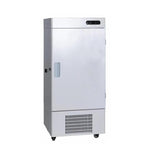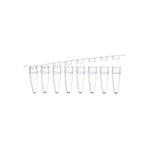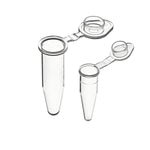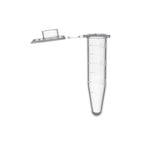You have no items in your shopping cart.

An Introduction to CO2 Incubators
Cultivating cells in a CO2 incubator is a common practice in cell culture research, but it comes with some challenges. One significant factor that researchers need to control is relative humidity (RH), which can impact the quality and consistency of cell cultures. The optimal RH requirements often depend on the type of culture being grown, the amount of liquid used, and the duration of the cultivation period. For instance, when using 96-well plates for longer cell culture experiments, the small volume of liquid per well is particularly susceptible to evaporation at the typical incubation temperature of 37°C. To mitigate this, researchers commonly aim to maintain a high RH level inside the incubator, often exceeding 90%, to reduce evaporation and prevent the culture from drying out.
While maintaining high RH can indeed help minimize liquid loss, it introduces a new challenge: condensation formation inside the incubator. Many researchers have observed that when RH levels are elevated, condensation tends to accumulate on the incubator walls and surfaces, potentially increasing the risk of contamination, particularly mycobacteria, during the culture process. This raises the question: Is condensation directly caused by the high RH inside the incubator, or are other factors at play?
To address this, it is essential to first understand what relative humidity is and how it behaves within a controlled environment.
Understanding Relative Humidity
Relative humidity is the amount of water vapor present in the air compared to the maximum amount of water vapor that the air can hold at a given temperature. It is expressed as a percentage, where 100% RH means the air is fully saturated with water vapor and cannot hold any more, leading to the potential for condensation if additional moisture is introduced. Conversely, at lower RH levels, the air is capable of absorbing more moisture without causing condensation.
In a typical CO2 incubator set at 37°C, the air can hold a significant amount of water vapor. When the RH is maintained at levels above 90%, it means that the air inside the incubator is close to saturation. Under such conditions, even slight temperature fluctuations or the introduction of additional moisture can push the air to its saturation point, leading to condensation.
Factors Contributing to Condensation
While high RH levels can indeed be associated with condensation, it is not solely the humidity that causes this issue. Several interrelated factors contribute to condensation formation in CO2 incubators:
-
Temperature Fluctuations: Temperature changes within the incubator, or between the incubator and the surrounding environment, can cause condensation. When warm, humid air inside the incubator comes into contact with cooler surfaces, such as the glass door or metal shelves, the air cools down, reducing its capacity to hold water vapor. This leads to the deposition of water droplets on these surfaces. Even small temperature variations, such as those that occur when the door is opened briefly, can significantly affect condensation formation.
-
Airflow Patterns: The design of the incubator and the internal airflow patterns can influence condensation. Uneven distribution of humidity or temperature within the chamber can create microenvironments where localized cooling occurs, leading to condensation in some areas while others remain dry. Biofargo's Co2 Incubators are designed with this in mind, to mitigate fluctuations in airflow patterns.
-
Incubator Door Opening Frequency: Frequent door openings disrupt the internal environment, causing temperature and humidity fluctuations that favor condensation. When the incubator door is opened, cooler, drier external air enters the chamber, resulting in a temporary drop in temperature and a relative increase in humidity, which may push the internal air past its saturation point, forming condensation on various surfaces.
-
Presence of Water Trays or Humidification Systems: Many CO2 incubators are equipped with water trays or humidification systems to help maintain high humidity levels. These systems can inadvertently contribute to condensation if the amount of water added exceeds the evaporative requirements of the incubator or if water spills occur. Excessive water supply can also cause uneven humidity distribution, leading to localized areas of high moisture content and condensation.
Preventing and Managing Condensation
To minimize condensation while still maintaining the necessary humidity levels for cell culture, researchers can adopt a few strategies:
-
Control Temperature Gradients: Ensure that the temperature inside the incubator remains as stable as possible, avoiding drastic fluctuations that can lead to condensation. This may include limiting the frequency of door openings, using double-paned glass doors to insulate against temperature changes, and ensuring that the incubator is placed away from drafts or temperature sources.
-
Optimize Humidification Practices: Use water trays or other humidification systems wisely. Adding only the necessary amount of water to achieve the desired RH level can help prevent excessive moisture. Regularly check and adjust water levels to ensure that they meet but do not exceed the requirements.
-
Utilize MycGuard-1: Utilizing MycGuard-1 solution is an important part of managing the effects of condensation. This solution is designed to eliminate mycobacterial contamination from CO2 Incubator water trays. This solution can help reduce the amount of bacteria in any condensation, should it occur in a CO2 incubator.
-
Ensure Proper Air Circulation: The airflow system within the incubator should be designed or adjusted to promote even temperature and humidity distribution. This helps prevent the formation of localized cool spots where condensation is more likely to occur. Some incubators come with built-in fans or specialized airflow systems to achieve this.
-
Use Anti-Condensation Coatings or Equipment: Consider using incubators with anti-condensation coatings on the inner surfaces or employing other technologies designed to reduce condensation, such as heated glass doors. These solutions help keep surfaces warm, reducing the likelihood of condensation forming.
Conclusion
While high relative humidity in CO2 incubators increases the risk of condensation, it is only one of a plethora of factors. Other important considerations include temperature fluctuations, airflow patterns, door-opening frequency, and humidification practices. To mitigate the effects of any expected condensation, scientists can manage humidity levels, minimize condensation risks, utilize mycguard-1, and ensure a consistent environment for cell culture growth. Taken together, these recommendations can mitigate the risk of condensation effects within your CO2 incubator.

